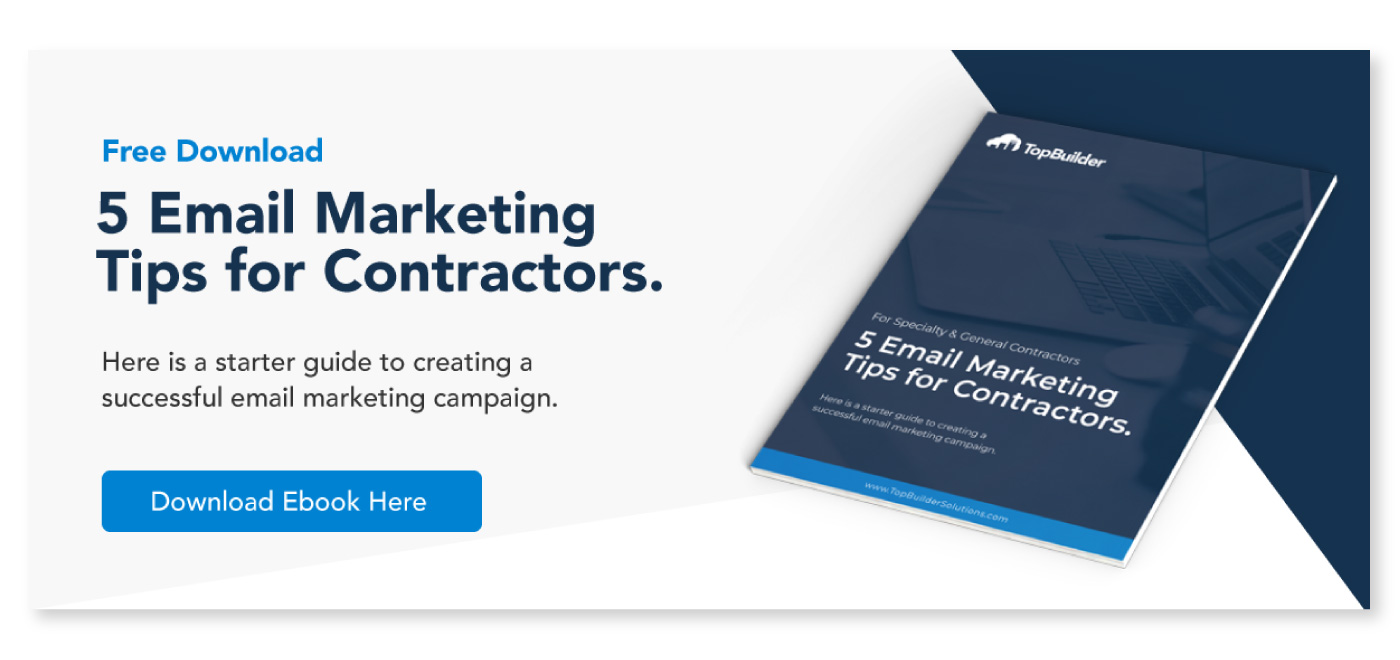Ever get an email and think, “Why did I get this?”
Who hasn’t? You likely received a dozen this morning.
Not only does this waste your time, it tells you to take the sender less seriously next time they email you. That’s if you haven’t already unsubscribed.
If a company sent it, then there’s likely a group of people all working towards high open rates, interactions, and conversions. So, what went wrong? For many, they skipped one crucial step. They didn’t segment their email list. They took a generic message and sent it to everyone in their contact list. Sound familiar?
Below we are going to highlight the 3 main reasons why contractors should segment their email lists. That’s if you weren’t already convinced by the introduction.
What exactly is email segmentation?
If you aren’t familiar with this process, think of a deck of cards.
You can separate the deck of cards into different colors, suits, low cards, high cards, face cards, etc. They’re all the same cards, but you can separate them into groups based on one or multiple variables.
Example:
- One variable: I want all the red cards in one group.
- Multiple variables: I want all the red cards, that are diamonds, minus the face cards in one group.
However, this does mean you need more than just an email address to segment your list. You’ll need additional information to make proper groups.
Example:
- One variable: I want to email all existing customers.
- Multiple variables: I want to email all existing customers, that we worked with this past year, minus the contacts that live outside our zip code.
As you can see from the above example, you need the contact’s name, email, project date, and location to create the list with multiple variables.
If you don’t have multiple variables or the ability to store those variables, then email segmentation will be much more difficult to complete. If you’re looking for tools that can help you manage that information, we invite you to review our email marketing tools here.
Why should contractors segment their email lists?
Today, we are going to cover the three main reasons why you want to segment your email lists.
- Better open rates
- Send laser-focused email campaigns
- Lower unsubscribes
We’ll begin with email open rates. Obviously, without this step, the other reasons really don’t matter. We will then cover how the content is interacted with. Hopefully, leading to some sort of conversion. Lastly, we’ll focus on reader retention. Making your readers eager to see more emails from you.
Let’s get started…
1. Better Open Rates
So, how does segmentation lead to better email open rates?
Email segmentation naturally helps you build smaller more defined groups. Instead of trying to find a message that speaks to everyone, you can send more targeted emails.
Let’s start with an example. Imagine you’re a roofing company. A hailstorm has passed by a neighboring town and it’s a good opportunity to re-engage previous customers. You decide to quickly email your entire email list to offer a free hail damage assessment. By emailing your entire list, it includes other towns, cities, and territories that weren’t involved in the storm. To those readers, your email doesn’t make sense, and they’ll likely pass right over it.
Now, in that same example, you could segment your email list to the town that was hit directly, possibly, the surrounding towns and cities just to be safe. It’s the same message, offer, and subject line, but it’s sent to a specific group. A group that was directly affected by the hailstorm. The result… higher open rates because it excludes the groups that weren’t affected.
Of course, this was a simple example, but it demonstrates how incorporating this step can drastically increase your open rates.
2. Send Laser-Focused Email Campaigns
With segmentation, you can send tailored promotions, discounts, and offers.
- Want to increase business in a specific territory?
- Send a promotional email to just that territory.
- Want to reward previous customers?
- Send a loyalty voucher to your previous customers.
- Want to cross-sell services?
- Send a promotional email to current active customers.
Again, these are simplified examples, but it shows how segmentation can help you specialize your promotional emails.
Of course, you’ll never get every single person who opens an email to convert, but segmentation will help you increase your conversion averages.
3. Lower Unsubscribes
The goal of email segmentation is to increase your chance to send the right message to the right person at the right time.
Without email segmentation, you run the risk of sending an email that:
- Doesn’t apply to your reader
- Doesn’t make sense to them
- Doesn’t add value to their day
- Doesn’t engage them
- Doesn’t interest them
- Or worse, annoys them
Whenever any of the above happen, you run the risk of getting an unsubscribe. Don’t get me wrong, you’ll get a couple unsubscribes here and there, but you don’t want a bunch.
If you get too many, it’ll lower your email reputation. If your email reputation score falls too low, it’ll start putting your emails in a spam folder. This is the last thing you want.
Conclusion
Today, we reviewed the top three reasons why a contractor should segment their email lists.
To begin, it helps you increase your open rates. Once your emails are opened, it helps keep your readers engaged and more interested in the promotion, offer, and/or discount. With continued effort, it’ll lower your unsubscribe counts and keep your readers wanting more.
However, email segmentation isn’t the only step in making an effective email campaign. If you’re wanting to read our full list of email marketing tips, you can find them here.
If you’re a contractor or home builder who needs help segmenting their email lists, please view our email marketing tools. These tools are built specifically to help contractors and home builders get the most out of their email campaigns. You can find more information here.



